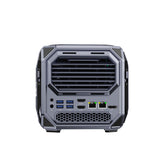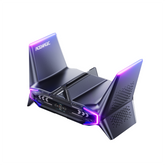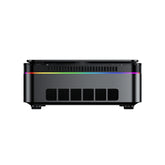How to Fix No Sound on Your Computer?

Why Can't I Hear Anything on My PC?
When your computer suddenly goes silent, it can interrupt both work and entertainment. Audio problems are among the most reported Windows issues. In most cases, they are not caused by hardware failure but by small, fixable configuration errors. Understanding the possible causes helps narrow down the solution and prevents unnecessary repairs.
Common reasons for no sound on a computer include:
- Loose cables or unplugged speakers
- Powered off or muted external speakers
- Wrong audio output device selected
- Muted or low system volume
- Outdated or corrupted sound drivers
- Recent Windows updates causing conflicts
- App-specific audio controls override system settings
These issues usually have quick fixes. Before trying advanced methods, start by checking your hardware connections and system volume settings. Small adjustments can restore normal sound in just a few minutes.
Quick Fixes: Check Your Hardware and Volume Settings
The fastest way to restore sound on a computer is to check hardware connections and system volume settings. These simple steps solve most “no sound” problems without any software adjustments. Begin with physical checks before moving to driver or software troubleshooting.

Inspect Your Hardware and Cable Connections
A physical issue can prevent audio output even if the system appears to work. Review the following items carefully:
- Speakers powered on: Confirm the power light or indicator is active.
- Disconnect headphones: Remove any connected headphones or Bluetooth devices to make sure sound is directed to your speakers.
- Reconnect audio cables: Unplug and firmly reinsert each cable connected to your PC and speaker.
- Try a different USB port: Switch your USB audio device to another port to rule out a faulty one.
- Correct jack placement: Use the green “audio-out” port, not the pink “mic-in” port.
If you are using Bluetooth speakers, check that they are paired correctly and within range. For external monitors with built-in speakers, verify the display cable (HDMI or DisplayPort) is seated properly.
Check All Your Volume and Mute Settings
Sound can be muted from several locations in Windows. A quick review of these settings often restores normal playback.
- System volume: Click the speaker icon on the taskbar and make sure the slider is not set to zero.
- Application volume: Right-click the same icon, select Open Volume Mixer, and confirm each app’s volume level.
- Physical volume controls: Many keyboards, headsets, and speakers include dedicated volume buttons or dials.
- Mute icons: Look for a crossed-out speaker icon in system or app windows. Remove mute for each device or application.
If sound is still missing, move to software-based troubleshooting in Windows. Audio drivers, output devices, and internal settings can all influence playback and may need to be reviewed next.
Windows Software & Driver Troubleshooting
If checking hardware and volume settings did not restore sound, the next step is to look at Windows software and drivers. When they are missing, outdated, or misconfigured, sound output can stop completely. Windows also includes several built-in tools to help identify and fix such issues.
Run the Built-in Windows Audio Troubleshooter
Windows provides a built-in tool that automatically detects and fixes common sound issues. It’s a good starting point before changing drivers or deeper settings.
How to Access the Troubleshooter
Windows 10:
- Open Settings → Update & Security → Troubleshoot.
- Select Additional troubleshooters.
- Choose Playing Audio and click Run the troubleshooter.
Windows 11:
- Open Settings → System → Troubleshoot.
- Click Other troubleshooters.
- Find Playing Audio and click Run.
The troubleshooter tests sound devices, looks for disabled drivers, and resets audio settings when needed.
Check Your Audio Output Device Settings
When Windows directs sound to the wrong output device, such as a monitor or disconnected headset, you won’t hear anything even if the sound is playing.
Set default playback device:
- Right-click the speaker icon in the taskbar.
- Select Sound settings.
- Under Output, choose the correct speakers or headphones as the default.
Enable disabled devices:
- In the same menu, click More sound settings.
- Right-click an empty area in the Playback tab.
- Check Show Disabled Devices.
- Re-enable any device you want to use.
Selecting the right output often resolves cases where the sound seems missing but is being sent to an inactive device.
Install or Update Your Audio Drivers
If your sound driver is outdated or corrupted, it can block communication between Windows and your audio hardware. Updating or reinstalling the driver usually fixes this.
Update via Device Manager:
- Press Windows + X and choose Device Manager.
- Expand Sound, video, and game controllers.
- Right-click your audio device (for example, Realtek Audio) and select Update driver.
- Choose Search automatically for drivers.
Reinstall the driver:
- Right-click the device again and select Uninstall device.
- Restart your PC. Windows will reinstall the correct driver automatically.
Roll back a driver (optional):
If the problem appeared after a recent update, open the device’s Properties → Driver tab → Roll Back Driver.
Complete All Windows Updates
Windows updates often include new patches for device compatibility. Keeping your system current helps maintain stable sound performance.
- Open Settings → Windows Update → Check for updates.
- Download and install all pending updates.
- Restart your computer when finished.
Disable Audio Enhancements
Audio enhancements in Windows modify how sound is processed, but they sometimes cause conflicts with certain hardware.
- Open Sound settings → More sound settings.
- Select your playback device → Properties.
- Open the Enhancements or Advanced tab.
- Uncheck all enhancement options, then click Apply.
Disabling these features can eliminate distortion or silence caused by software conflicts.
Check for App-Specific Audio Conflicts
Sometimes, sound works in one program but not another. This usually happens when apps take exclusive control of audio devices.
- Close communication or streaming apps like Zoom, Discord, or Skype.
- Restart the affected program.
- In Sound settings → Advanced, disable Allow applications to take exclusive control of this device.
Once all applications share access properly, sound output often returns to normal.
Advanced Solutions for Persistent Sound Issues
If your computer still has no sound after basic and software-level checks, the issue might involve deeper system components or hardware compatibility. The following advanced solutions address uncommon but serious causes of audio failure. Proceed carefully and only if the previous steps did not work.
Restart Your Computer and Speakers
A full restart can reset system processes and hardware communication. Temporary conflicts in Windows or your audio driver can block sound until the system refreshes.
- Turn off your computer and speakers completely.
- Wait about 30 seconds before turning them back on.
- After rebooting, play a short audio file to test.
This basic action clears temporary driver locks or background processes that interfere with sound output.
Test Different Audio Formats
Some systems fail to play specific file types or output formats. Testing alternative audio formats helps determine if the problem is file-related.
- Right-click the speaker icon → Sound settings → More sound settings.
- In the Playback tab, select your device → Properties.
- Open the Advanced tab.
- Change the Default Format to another option (for example, from 24-bit 48,000 Hz to 16-bit 44,100 Hz).
- Apply changes and test again.
If sound works after switching formats, the original configuration was incompatible with your hardware or codec.
Update the BIOS
BIOS updates can fix hardware communication errors, including rare audio malfunctions. This step requires caution and should be done only by users familiar with system updates.
- Visit your computer or motherboard manufacturer’s official website.
- Locate the BIOS update page for your exact model.
- Follow the provided instructions carefully.
❗Warning: Interrupting a BIOS update can make your computer unbootable. If you are uncertain, contact a professional before proceeding.
Seek Professional Advice
If none of the above solutions restore sound, the issue may involve a damaged sound card or motherboard. Common symptoms include:
- No audio device detected, even after reinstalling drivers.
- Sound disappearing intermittently during use.
- Audible static or distortion across all applications.
In these cases, professional inspection is the safest option. A technician can test hardware components directly and replace faulty parts if needed. Replacing a dedicated sound card or integrated audio chip is often the final fix for persistent failures.
ACEMAGIC Support
Get the latest drivers and system updates for your device.
FAQ
This section answers common questions about computer sound issues. Each response provides direct, actionable information to help users diagnose and fix specific problems.
Why did my computer's sound suddenly stop working?
Sudden sound loss usually results from muted settings, incorrect output devices, or recent Windows updates. Start by checking system volume, playback device selection, and driver status in Device Manager. Temporary glitches can often be cleared by restarting your PC.
How do I know if my sound card is broken?
A broken sound card shows no activity in Device Manager or produces errors such as “No Audio Output Device is installed.” If updating or reinstalling drivers doesn’t restore it, and the device doesn’t appear in BIOS or Windows settings, hardware replacement is likely required.
Why can I hear sound through headphones but not speakers?
Windows might be prioritizing your headphone output over speakers. Disconnect the headphones, open Sound settings, and manually select your speakers as the default playback device. If speakers remain silent, test them on another computer to confirm they are working.
How do I fix the “No Audio Output Device is installed” error?
This error means Windows cannot communicate with the sound driver. Open Device Manager, expand Sound, video, and game controllers, and update or reinstall your audio driver. If the device doesn’t appear, enable View → Show hidden devices to reveal disabled entries.
Why is there no sound on my computer after a Windows update?
System updates can sometimes override or remove drivers. Run Windows Update again to check for patches or optional driver updates. If the issue began immediately after an update, use Device Manager to roll back your audio driver to the previous version.
How do I check if my computer is muted?
Click the speaker icon on the taskbar. If you see a red cross or muted icon, click it to unmute. Also, verify that no physical mute button is active on your keyboard, headset, or speaker controls.
What is an audio driver, and why do I need to update it?
An audio driver is a small program that allows Windows to communicate with your sound hardware. Without it, your computer cannot process audio output. Updating drivers keeps them compatible with the latest Windows updates and prevents connection errors.
Final Note
If none of these solutions work, consider testing your sound device on another computer. This step helps confirm whether the problem lies with the hardware or the software. For ongoing reliability, keep Windows and all drivers up to date.
External Resource
For official troubleshooting steps, visit Microsoft’s support guide: Microsoft: Fix sound problems in Windows








Leave a comment
Please note, comments need to be approved before they are published.